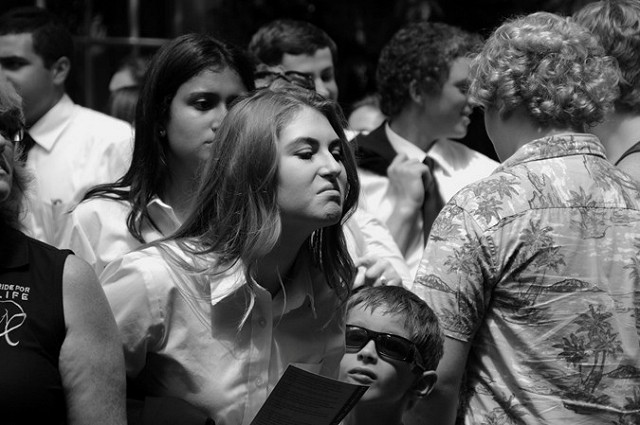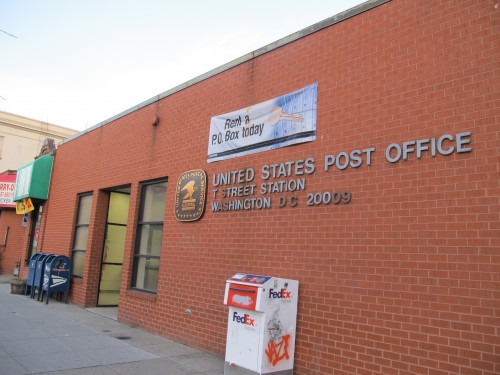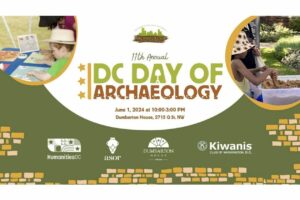
Photo by PoPville flickr user Phil
From a press release:
“The corpse flower (Amorphophallus titanum), also called “the stinky plant,” is about to bloom at the United States Botanic Garden (USBG) Conservatory. The plant went on display Friday, July 22. The Garden currently estimates peak bloom might happen between July 28-31. Once fully open, it usually remains in bloom for 24 to 48 hours and then quickly collapses. You can track the bloom’s progress via live video at http://www.USBG.gov/CorpseFlower.
The plant is famous for its large size, pungent odor, and unpredictable bloom schedule. The bloom is the largest unbranched inflorescence in the world – reaching up to 12 feet tall in the wild. An inflorescence is a cluster of multiple flowers that in the case of Amorphophallus species looks like a single flower. The corpse flower has hundreds of flowers located at the base of the spadix (the large vertical center) inside the famous purple-maroon spathe (the part that looks similar to “petals”).
The corpse flower gets its name from the putrid scent it emits while in bloom to attract pollinators such as carrion beetles and flies. Some describe the scent as a combination of garlic, fish, diapers, and rotting meat.
The plant, first known to science in 1878, is native to tropical rainforests of Indonesia. Since such a large bloom requires lots of energy, it can take several years to several decades to store enough energy to bloom. Public displays of this unique plant have occurred a limited number of times in the United States. The U.S. Botanic Garden last displayed a blooming corpse flower in 2013.
The U.S. Botanic Garden is open to the public, free of charge, every day of the year from 10 a.m. to 5 p.m. Starting this weekend, the Conservatory will stay open until 8 p.m. while the corpse flower is on display, and will stay open until 11 p.m. during peak bloom. The Conservatory is located at 100 Maryland Ave. SW, on the southwest side of the U.S. Capitol. Visitors are encouraged to use Metrobus and Metrorail. Visit http://www.USBG.gov/CorpseFlower for updates on peak bloom timing and extended hours, to learn more about the plant, and to see a live video stream.”
Recent Stories

For many remote workers, a messy home is distracting.
You’re getting pulled into meetings, and your unread emails keep ticking up. But you can’t focus because pet hair tumbleweeds keep floating across the floor, your desk has a fine layer of dust and you keep your video off in meetings so no one sees the chaos behind you.
It’s no secret a dirty home is distracting and even adds stress to your life. And who has the energy to clean after work? That’s why it’s smart to enlist the help of professionals, like Well-Paid Maids.

Unlock Peace of Mind for Your Family! Join our FREE Estate Planning Webinar for Parents.
🗓️ Date: April 25, 2024
🕗 Time: 8:00 p.m.
Metropolitan Beer Trail Passport
The Metropolitan Beer Trail free passport links 11 of Washington, DC’s most popular local craft breweries and bars. Starting on April 27 – December 31, 2024, Metropolitan Beer Trail passport holders will earn 100 points when checking in at the
DC Day of Archaeology Festival
The annual DC Day of Archaeology Festival gathers archaeologists from Washington, DC, Maryland, and Virginia together to talk about our local history and heritage. Talk to archaeologists in person and learn more about archaeological science and the past of our







